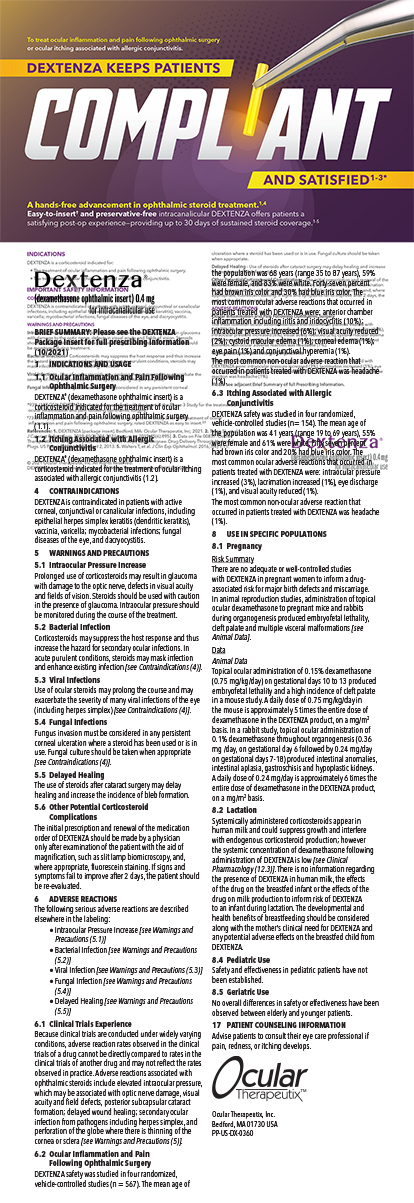In the past, corneal refractive surgery was for our younger patients, and our cataract surgery patients were a separate group in whom less attention was paid to the final refractive outcome. Today, we offer more choices than ever to all of our patients. With the current advanced IOL options for presbyopia, refractive surgery is as much a lenticular procedure as it is cornea based. Yet to be a complete refractive surgeon, we must offer all refractive options to all patients.
It is clear how much of an effect the baby boomer generation's health care needs has had on medicine. This demographic is currently driving the interest in presbyopia-correcting IOLs. There is another group starting to appear, however—generation "Y," or "Gen Y," is the population in their 20s. By many accounts, Gen Y may be as big of a group as the baby boomers. Gen Y wants refractive surgery, and we should be prepared for them with as many options as possible. Although corneal refractive surgery is successful, it is not designed for every refractive error and should not be pushed past its limits. For these patients, phakic IOLs are likely a better option.
TWO PHAKIC IOLs AVAILABLE
There are two phakic IOLs currently approved in the US, the Verisyse (Advanced Medical Optics, Inc., Santa Ana, CA) and the Visian Implantable Collamer Lens (ICL; STAAR Surgical Company, Monrovia, CA). While I have implanted both, I am most familiar with the ICL.
The ICL is made with a unique material—collagen. The UV-absorbing material discourages coating in vivo, has a high (1.453) index of refraction, and is highly elastic and foldable. The lens is approved for 3.00 D to 20.00 D of myopia, and an astigmatic approval is pending (Figure 1).
Implantation of the ICL is very straightforward. Most of the surgery is a variation of standard cataract surgery techniques, including the incision, lens insertion, and irrigation. Basically, it is cataract surgery without all the difficult steps such as the capsulotomy and phacoemulsification. Results with the ICL have been excellent. Of note, the stability of this lens-based procedure is very impressive.
Figure 2 shows trends up to 36 months postoperative in an FDA trial for BCVA, UCVA, and stability of refraction. Toric ICL results are even better with 92 at ≥20/25 UCVA with an average myopia of -10.10 D. The ICL patients also show an impressive gain in lines of BCVA; 58 gained at least one line of vision. Complications in the FDA trial were well within accepted limits, and only two of 256 eyes developed clinically significant cataracts out to 4 years. Endothelial cell counts remained stable with a stable percentage of hexagonal cells and coefficent of variation. It is important to note that clinical results from the FDA trial of the Verisyse lens were also excellent.
"WOW" FACTOR
From the patient's perspective, there is a significant "wow" factor and excellent satisfaction. Many patients, in my experience, are able to see 20/25 or 20/30 within minutes of the procedure. This significant perceived benefit to the patient was what built our LASIK practices. Although the FDA data are impressive for phakic IOLs, now that two models are approved and being used in real world practice, I believe the results will become even better. I also believe that being able to use the ICL for higher myopes will keep us from pushing LASIK past its limits and thus improve overall LASIK results. According to the ASCRS surveys, most doctors feel phakic IOLs will improve their practice. The ICL is also the preferred choice for corneas suspected of being at risk for developing postrefractive surgery ectasia. This small but extremely important subgroup is best served with an intraocular option.
Finally, remember this is a refractive surgery procedure, just like LASIK, PRK, and presbyopia-correcting IOLs. Phakic IOL procedures are performed on healthy eyes, and the patients pay for them out of pocket. Since FDA approval, I think it is fair to say that the ICL has passed the real-world test. Hundreds of surgeons have successfully performed thousands of procedures. To be a complete refractive surgeon, one needs to be familiar with these phakic IOL options.
Stephen G. Slade, MD, is in private practice in Houston. He is a consultant for Alcon Laboratories, Inc., Advanced Medical Optics, Inc., Bausch & Lomb, STAAR Surgical Company, and Eyeonics, Inc. Dr. Slade may be reached at (713) 626-5544; sgs@visiontexas.com.


